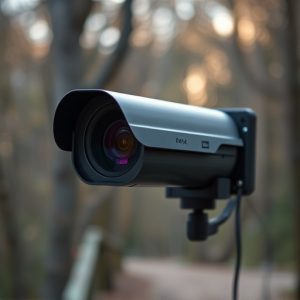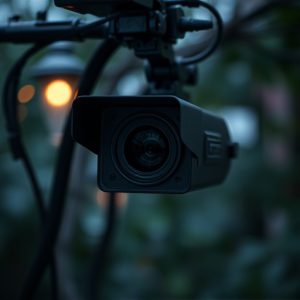Detecting Hidden Cameras: RF Guide for Renters’ Privacy
Discrete security cameras, also known as hidden cameras, offer renters enhanced privacy and safety t…….
Discrete security cameras, also known as hidden cameras, offer renters enhanced privacy and safety through seamless integration into everyday objects. These advanced devices feature motion detection, night vision, and remote access. To counter the growing concern of hidden cameras, this guide provides practical techniques using radio frequency (RF) technology to detect these devices, ensuring peace of mind for renters and businesses. However, legal and ethical considerations must be navigated, with responsible use and consent being paramount.
In today’s world, privacy is a precious commodity. For renters, understanding the potential presence of hidden cameras is crucial for protecting personal spaces. This guide delves into the art of detecting discrete security cameras using radio frequency (RF) technology, a powerful tool for those seeking peace of mind. We explore why RF detection matters, especially for renters, and navigate legal considerations to ensure ethical use of these advanced tools. By mastering these techniques, individuals can safeguard their privacy and live with enhanced security awareness.
- Understanding Hidden Cameras and Their Uses
- The Importance of Detecting Discreet Security Cameras for Renters
- Radio Frequency (RF) Technology in Camera Detection
- Practical Steps to Identify Hidden Cameras Using RF
- Legal Considerations and Ethical Use of Camera Detection Tools
Understanding Hidden Cameras and Their Uses
Hidden cameras, also known as surveillance devices or spy cameras, are small, discrete security cameras designed to be almost invisible in their surroundings. They can mimic everyday objects like smoke detectors, light switches, or even plants, making them a popular choice for those seeking discreet monitoring solutions. These cameras are often used by landlords, property managers, and individuals who want to ensure the safety of their homes or businesses without causing alarm. With modern technology, hidden cameras have become more accessible, affordable, and advanced in terms of features like motion detection, night vision, and remote viewing capabilities.
For renters, understanding the concept of discrete security cameras is essential for maintaining privacy while also ensuring a safe living environment. By renting these devices, they can discreetly monitor their spaces, deter potential intruders, and gather evidence if needed. This practice is particularly relevant in high-risk areas or situations where individuals have concerns about personal safety and security.
The Importance of Detecting Discreet Security Cameras for Renters
For renters, detecting hidden cameras, especially discrete security cameras for renters, is a significant concern for privacy and safety. With the increasing prevalence of surveillance technology, it’s crucial to be aware of potential hidden threats within rental properties. Renters often have limited control over their living spaces, making it essential to understand the methods used to monitor their activities. Discrete security cameras can be easily installed without the tenant’s knowledge, raising serious privacy issues.
Being able to identify and locate these devices is a powerful tool for renters to protect themselves from unwarranted surveillance. It empowers them to take proactive measures to ensure their personal spaces remain private and secure. This guide offers practical techniques and technologies to help individuals detect hidden cameras, providing peace of mind and control over their living environment.
Radio Frequency (RF) Technology in Camera Detection
Radio Frequency (RF) technology has emerged as a powerful tool in the field of security, particularly for detecting hidden cameras, often referred to as discrete security cameras for renters. This innovative approach leverages RF signals to uncover surveillance equipment that may be concealed within a premises. By emitting and analyzing specific frequencies, RF detectors can identify the unique electromagnetic signatures emitted by camera components, even when they are not actively recording.
The advantage of using RF technology lies in its ability to bypass typical visual detection methods, making it an ideal solution for those concerned about privacy and security. For renters looking to ensure their spaces remain free from covert surveillance, portable RF detectors offer a discrete and effective means of identifying hidden cameras without raising unnecessary suspicion. This technology is valuable not only for personal privacy but also for businesses aiming to protect sensitive information and for law enforcement conducting investigations.
Practical Steps to Identify Hidden Cameras Using RF
Identifying hidden cameras using radio frequency (RF) detection is a practical step for renters concerned about privacy. Start by assessing your environment; look for any unusual electrical outlets, cables, or devices that seem out of place. These could be indicators of discrete security cameras. Next, invest in a high-quality RF detector. These tools emit signals that can interfere with active cameras, triggering their alerts and revealing their presence.
Scan your surroundings using the detector, paying close attention to walls, ceilings, and floors. Discreet cameras often hide in plain sight, so be vigilant for any electronic interference. If you detect a strong signal, it could point to an active hidden camera nearby. It’s important to note that while RF detection is effective, it may not uncover all cameras, as some modern devices operate on different frequencies or use wireless connections beyond RF signals.
Legal Considerations and Ethical Use of Camera Detection Tools
When using tools to detect hidden cameras, it’s crucial to consider the legal implications and ethical use of such technology. In many regions, surveillance practices are tightly regulated to protect privacy rights. For renters considering discrete security cameras, understanding local laws is essential. Unauthorized installation or operation of camera detection devices can result in legal consequences.
Ethically, using these tools should be done responsibly and with consent. Detecting hidden cameras should not invade others’ privacy or be used for malicious purposes. It’s important to respect the right to privacy while also ensuring a safe environment. Transparency and accountability are key; always obtain permission from individuals or property owners before employing camera detection technology.
Detecting hidden cameras using radio frequency (RF) technology is a powerful tool, especially for renters seeking to ensure their privacy. By understanding how these discrete security cameras operate and employing practical RF detection methods, individuals can navigate the ethical use of this technology while safeguarding their personal spaces. Staying informed about legal considerations associated with camera detection tools empowers users to protect their rights and maintain a safe environment.


